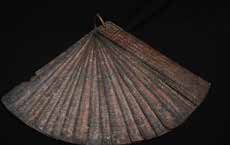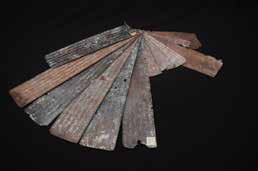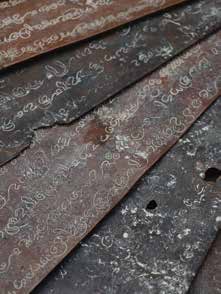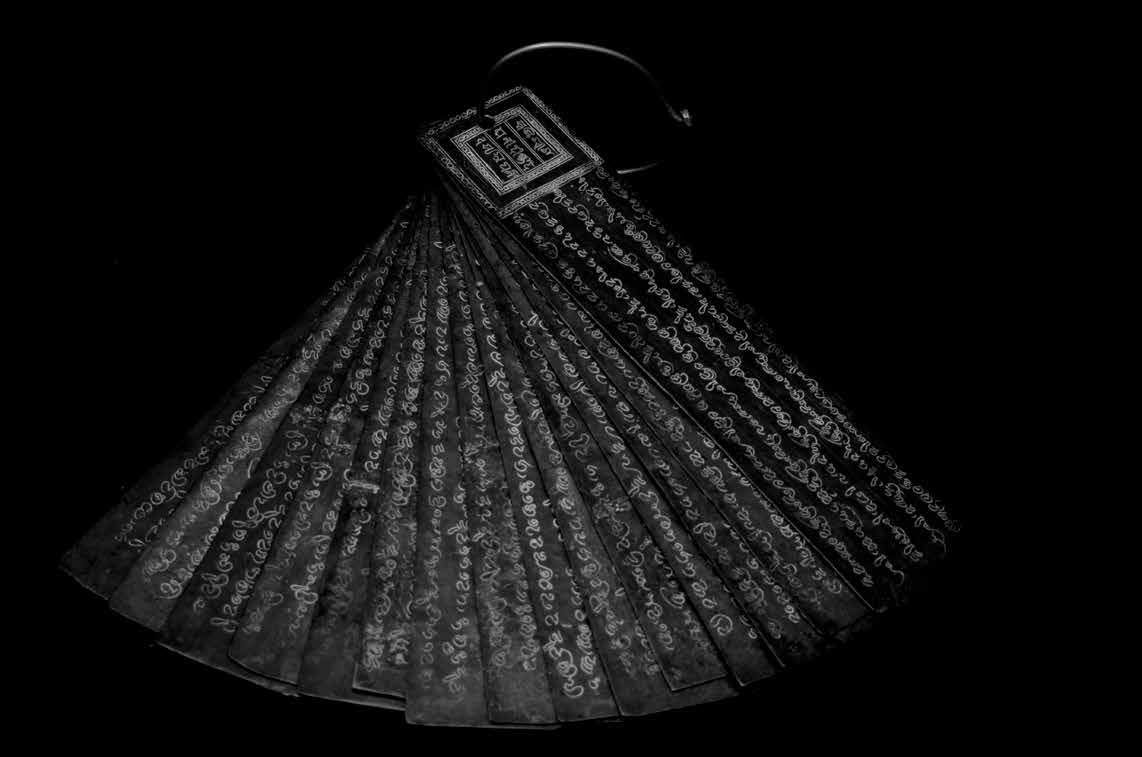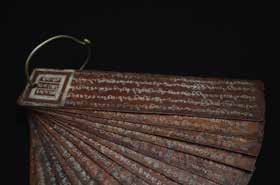
Loamaafaanu
Maldives - The National Museum of the Maldives
Story
Loamaafaanu are thin sheets of copperplates attached with an iron ring at one end and were the official grants given by the Sultans to the mosques. They were hung inside the mosque for everyone who entered to see and to read. It is believed that every mosque would have hung a Loamaafaanu but now only parts of four sets survive from an estimated two hundred sets. The four surviving copperplates are referred to as Gamu Loamaafaanu (1194/95 CE), Isdhoo Loamaafaanu (1195/96 CE), Dhanbidhoo Loamaafaanu (1196/97 CE) and Kidahuvadhoo Loamaafaanu (13c CE). The custom of hanging copperplates came from mainland India a country with which the Maldives shared the same religion until embracing Islam in 1153 CE.
The copperplates shed light on the time of the Maldives conversion from Buddhism to Islam and on the culture, tradition and lifestyle of the people. They therefore reflect a key turning point in the development of the communities and states in the Indian Ocean.
The copperplates detail the history and social arrangements in the Maldives as well as details of the king and his dynasty. The Gamu Loamaafaanu contains information on Islamic teaching at the time that is not seen on other copperplates. The Dhanbidhoo Loamaafaanu records the conversion of the people of Dhanbidhoo Island on Laamu Atoll and the removal of the monastery and the building of a mosque in its place.
The copperplates also give insights into the evolution of languages. They are written in two scripts, (Eveyla Akuru and Dhives Akuru) that are no longer spoken and so are very important for linguistic studies. The earlier Loamaafaanu are written in Eveyla script which evolved into the Dhives Script over a period of about two hundred years.
Images
Location
Information
- Registration Year:
2014
- Related Repositories
- The National Museum of the Maldives
- Download
- Nomination Form

